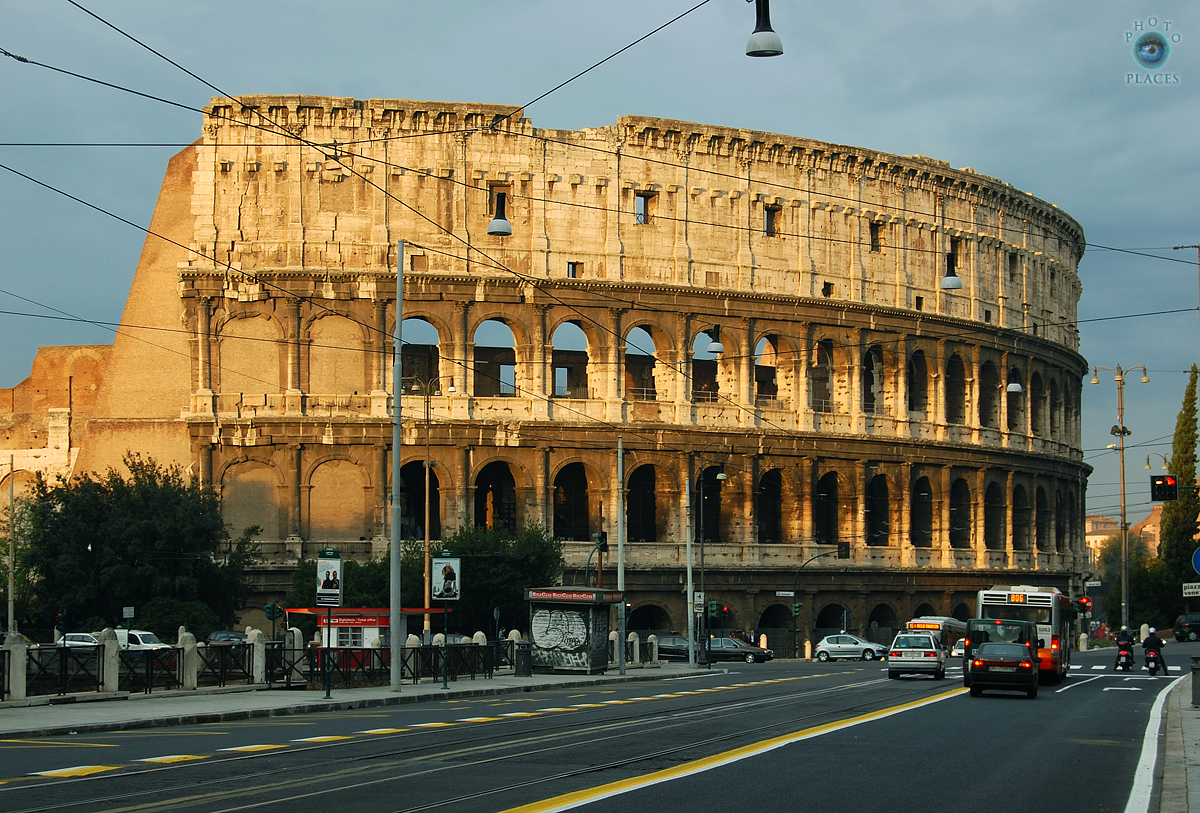Largest amphiteatre in ancient world's history, and the largest still standing, as well as one of seven new wonders of the world, Colosseum is probably the most
recognizable symbol of Roman Empire and also a tourism symbol of modern Rome.
| MAIN FACTS | |
|---|---|
| LOCATION | Rome, Italy |
| ARCHITECTURE | Ancient Roman, Tuscan, Ionic, Corinthian |
| BUILT | 80 (AD) |
| ARCHITECT | Unknown |
| AREA | 2.4 ha |
| RATING (9,65/10) |  |
Unlike Roman theatres that were built into hillsides, the Colosseum is an entirely free-standing structure. The Colosseum has suffered extensive damage over the centuries, with large segments having collapsed following earthquakes. The north side of the perimeter wall is still standing; the distinctive triangular brick wedges at each end are modern additions, having been constructed in the early 19th century to shore up the wall. The remainder of the present-day exterior of the Colosseum is in fact the original interior wall.
The Colosseum's huge crowd capacity (50 000 - 80 000 people) made it essential that the venue could be filled or evacuated quickly. Its architects adopted solutions very similar to those used in modern stadia to deal with the same problem. The amphitheatre was ringed by eighty entrances at ground level, 76 of which were used by ordinary spectators. Each entrance and exit was numbered, as was each staircase. The northern main entrance was reserved for the Roman Emperor and his aides, whilst the other three axial entrances were most likely used by the elite. All four axial entrances were richly decorated with painted stucco reliefs, of which fragments survive. Many of the original outer entrances have disappeared with the collapse of the perimeter wall, but entrances XXIII (23) to LIIII (54) survive.
The Colosseum was used to host gladiatorial shows as well as a variety of other events. The shows, called munera, were always given by private individuals rather than the state. They had a strong religious element but were also demonstrations of power and family prestige and were immensely popular. Another major attraction was the animal hunt, or venatio. This utilized a great variety of wild beasts, mainly imported from Africa and the Middle East, and included creatures such as rhinoceros, hippopotamuses, elephants, giraffes, aurochs, wisents, Barbary lions, panthers, leopards, bears, Caspian tigers, crocodiles and ostriches. Battles and hunts were often staged amid elaborate sets with movable trees and buildings.
[Wikipedia]
BUY ROME COLOSSEUM FULL SIZE PHOTOS







Post A Comment:
0 comments: